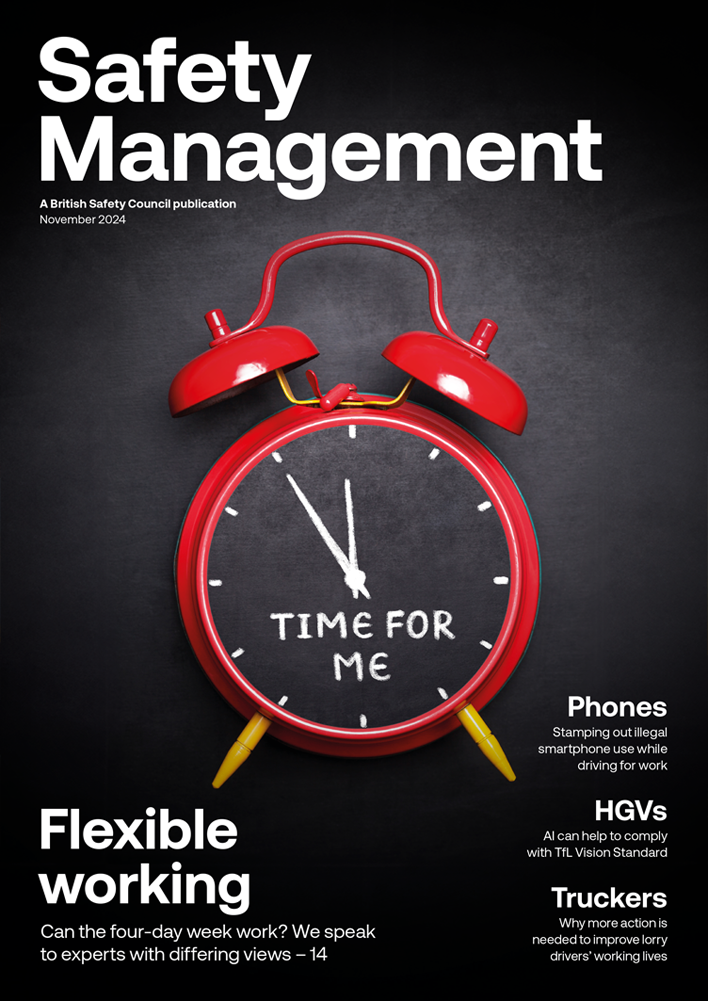Those in control of certain high-risk multi-occupied residential buildings will in future have to appoint a Building Safety Manager to oversee the fire and structural safety of the building.
Features
Building a safer future
The concept of the Building Safety Manager (BSM) first featured in Dame Judith Hackitt’s report Independent Review of Building Regulations and Fire Safety. Her vision was that the BSM would be responsible for the day-to-day management of the building while also acting as the point of contact for residents.
Crucially, Dame Hackitt stipulated that this BSM would need to have the right skills, knowledge, experience and behaviours (SKEB) to take on the role, which would need to contribute to holistic, whole building safety for higher-risk buildings.
Since May 2018, there have been several consultations and even a draft Building Safety Bill (BSB), which have refined today’s BSM concept as having three functions: to manage the building in accordance with the safety case report; to establish and operate a mandatory occurrence reporting system; and to implement a resident engagement strategy.
 Building Safety Managers are most likely to be a facilities management professional with health and safety experience. Photograph: iStock
Building Safety Managers are most likely to be a facilities management professional with health and safety experience. Photograph: iStock
The draft BSB noted the BSM function as a statutory role that could be taken up by an individual or organisation. In case of the latter, there would need to be a nominated individual with the right SKEB to manage the BSM functions.
The explanatory notes to the Bill clarified that, in line with Dame Hackitt’s report, the BSM’s principal role is to support the Accountable Person (AP) in the day-to-day management of fire and structural safety for buildings in scope. After all, this AP does not have any competence requirements attached to their dutyholding role, so they need professional support when managing buildings – unless they would meet the BSM competence requirements themselves, of course.
Who will be the BSM?
BSMs are likely to be drawn from across the whole spectrum of professionals currently working in the occupation phase, with the most likely profile being a facilities management professional with health and safety experience. However, many other professionals are declaring an interest: managing agents, fire safety professionals, housing professionals, health and safety specialists, engineers – the list could go on.
At times it is queried if there will be sufficient supply for the demand of the role, but, given the broad-spectrum interest, it is unlikely there will be problems. What is likely to happen is that many professionals will need to upskill in a particular area for the role, as it does have a broad remit.
 Sofie Hooper is head of policy at the Institute of Workplace and Facilities Management (IWFM)
Sofie Hooper is head of policy at the Institute of Workplace and Facilities Management (IWFM)
The BSM needs to understand structures and building operations, life safety (including fire safety) and how to maintain it in buildings, risk assessment and management, and understanding the limits of their competence; all the while providing leadership and taking the lead on the resident engagement. After all, residents are the ultimate stakeholders in these buildings and without their co-operation it will be impossible to achieve holistic building safety.
Competence framework and pathway to competent BSM
IWFM provided the secretariat for Working Group 8 (WG8) – the cross-sector working group charged with developing the competence framework for the new statutory BSM role. In October 2020, WG8 published its skills, knowledge, experience and behaviour requirements in a new report, Safer people, safer homes: Building Safety Management.
The report is forming the basis for a publicly available specification (PAS) commissioned by the Ministry of Housing, Communities and Local Government (MHCLG), which is being drawn up by the British Standards Institution. PAS 8673 is already under development and a four-week public consultation is expected to take place over the summer.
Based on what we know from Clause 101 in the draft BSB, the forthcoming Bill will provide statutory guidance to APs on how they meet their requirements to check the BSM’s competence. APs will have been deemed to have met their due diligence requirements when they can demonstrate that their appointed BSM meets the PAS requirements. We will of course have to wait for the final words of the forthcoming Bill.
In their report, WG8 made several recommendations around making it easier for both APs and residents to check whether the BSM for the building is competent. One related to the need for a central register of BSMs and another related to a single organisation delivering a certification and assessment service, both endorsed by the Housing Select Committee in their Pre-legislative Scrutiny report on the draft Bill.
Having one organisation delivering transparency on a non-commercial ‘not-for-profit’ basis would increase confidence in the competence of BSMs. As this function will not be delivered by the Building Safety Regulator, WG8 has now morphed and grown with new members into the Building Safety Alliance, with the intent of delivering this single point of assurance for all.
Until the certification scheme – certifying competence against the PAS 8673 – is operational, people interested in the BSM role can use the self-assessment tool in Safer people, safer homes: Building Safety Management to identify the gaps where they may need upskilling.
Benefits and challenges
The most obvious benefit of the role is that there would be a single competent and dedicated person who should have a holistic overview of a building’s safety status. While the number of buildings a BSM will manage will not be prescribed, the expectation is that the BSM will be familiar with the building and its safety case. This means that the number of buildings in a BSM’s portfolio should remain manageable. The Regulator will be registering BSMs as part of the safety assurance certificate, so they should know how many buildings an individual BSM will manage.
Using a single person should close any gaps that would arise if there were multiple people responsible for fire safety. Where there are mixed-use buildings, such issues would most certainly arise, but this is expected to be managed by the new duty to cooperate with any Responsible Persons under the Fire Safety Order 2005.
However, it isn’t just the competence linked to a single individual that is important; alongside and interwoven into the new role are the wider requirements for competent people throughout the lifecycle of the building and the golden thread of information duties. With better information, validated through competent people, better and safer decision making in the occupation phase will be enabled.
The fact that the BSM is a regulated role should be helpful in an area that is often dominated by risk management and has perhaps had too much focus on compliance with minimum standards. In combination with squeezed budgets and resources, this focus on minimum standards has often undermined our ability to achieve the right outcomes.
There are, however, challenges to achieving Dame Hackitt’s vision. As the AP will have no competence requirements and the role will be locked into a contractual relationship between the AP and the BSM, the AP is unlikely to understand the requirements and demands of the BSM role. This is likely to be a source of pressure and a challenge to the expected independence of the BSM.
It will therefore be important for the legislation to clearly outline what the legal duties of the BSM are. Without such clarity, there is huge scope for varying interpretation of what the role should really do, which would only be mitigated by the competence requirements of the PAS 8673 and any consequent certification scheme that would ensure people are genuinely competent for the role. How this link between the PAS and the statutory guidance for the AP (to meet their due diligence requirements) is enshrined in legislation will be crucial, not just for the raising of competence standards, but also for achieving the ultimate aim of safer homes.
Another challenge for the role is to ensure that any nominated individual within a BSM organisation does not just meet the competence standards of PAS 8673, but that they also have sufficient support in terms of resources and funding to manage the BSM functions.
Lastly, experience tells us that regulator support is a crucial element to delivering building and life safety. The regulator’s role as an enforcer is an important one and they need to be given the tools to make sure that the ‘stick’ is a genuine deterrent for non-compliance.
The BSM’s function to operate a mandatory occurrence reporting system is a great help towards better enforcement of the system. The Health and Safety Executive, who will lead the Building Safety Regulator, has a great reputation as an independent regulator. Their role as regulator has been welcomed; now the anticipated Bill needs to confirm the tools they have been promised.
The BSM role has caused great excitement over the past few years because of the opportunity for culture change and delivering safe homes, but, as always, the devil will be in the detail of the legislation, which is due some time before or after Parliament’s Summer recess. And until we see that detail, it will remain unclear if the new role will be evolution, revolution or plain old business as usual.
Sofie Hooper is Head of policy at The Institute of Workplace and Facilities Management (IWFM)
FEATURES

Winter pressures mean good mental health support is crucial
By Kevin Bampton, British Occupational Hygiene Society on 01 December 2021
I will tell anyone who cares to listen that winter 2020/2021 was a historic moment in British social and economic history. British business became, for the first time ever, my public health hero.

The big sleep
By Marcus Herbert, British Safety Council on 01 December 2021
Poor quality sleep can affect both our physical and psychological wellbeing, but simple lifestyle changes can make a big difference.

Why changes to recycling legislation in England are an opportunity, not a burden
By Adriana Olaya Rodriguez, Newell Brands on 12 November 2024
From March 2025, many businesses in England will have to begin separating their recyclable and food waste from general waste prior to collection, but the changes will bring wider business benefits, such as reduced waste disposal costs and improved sustainability credentials.



